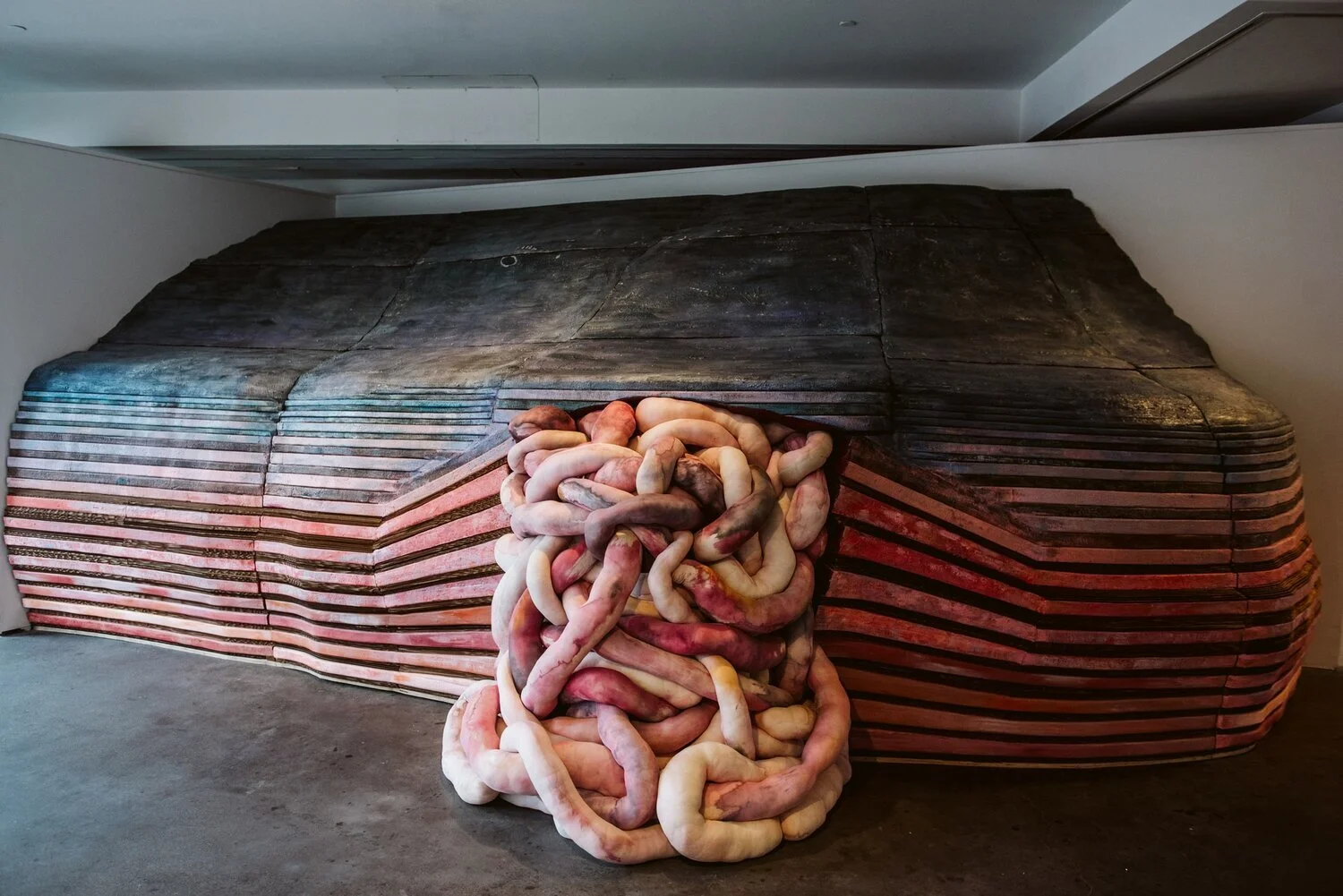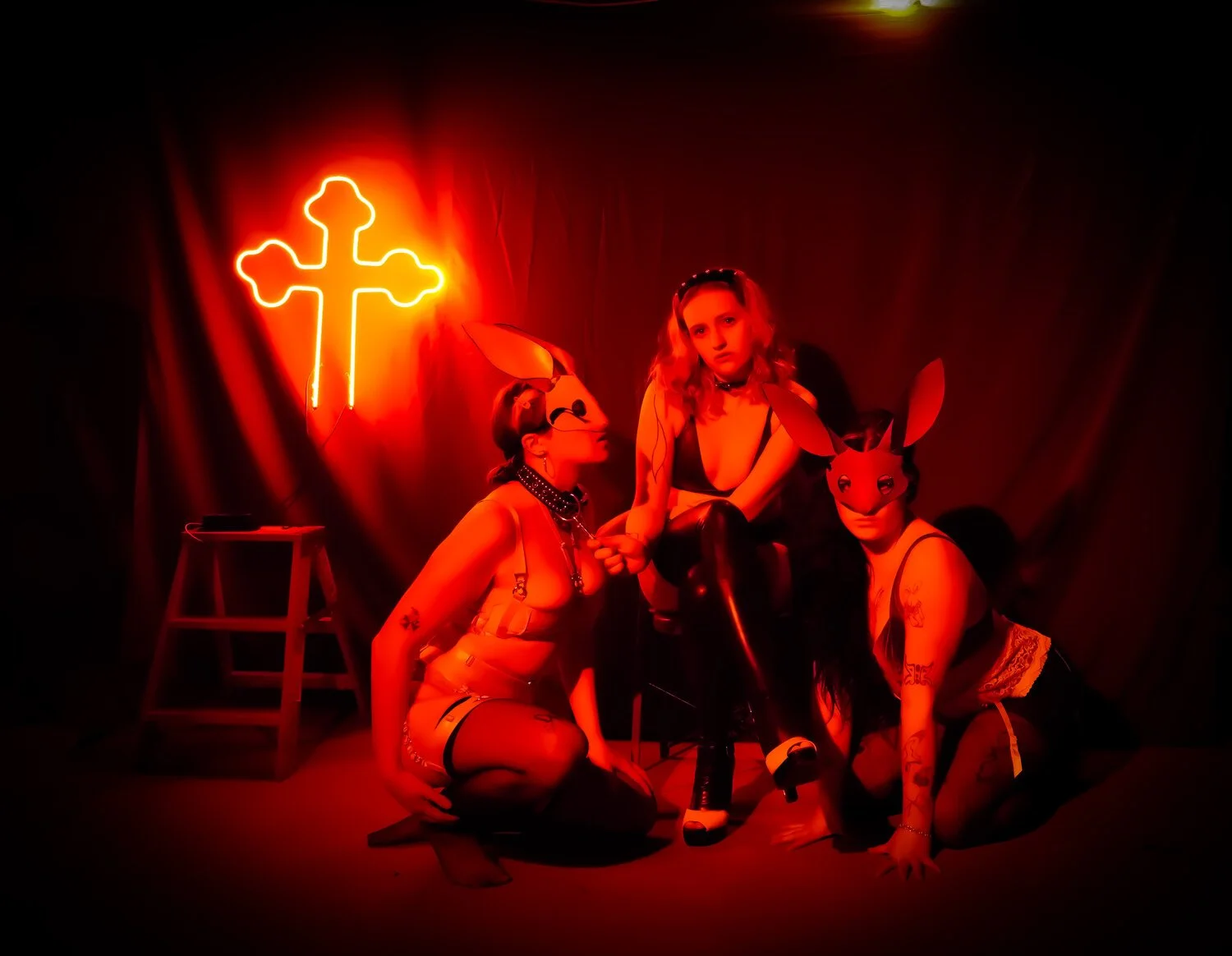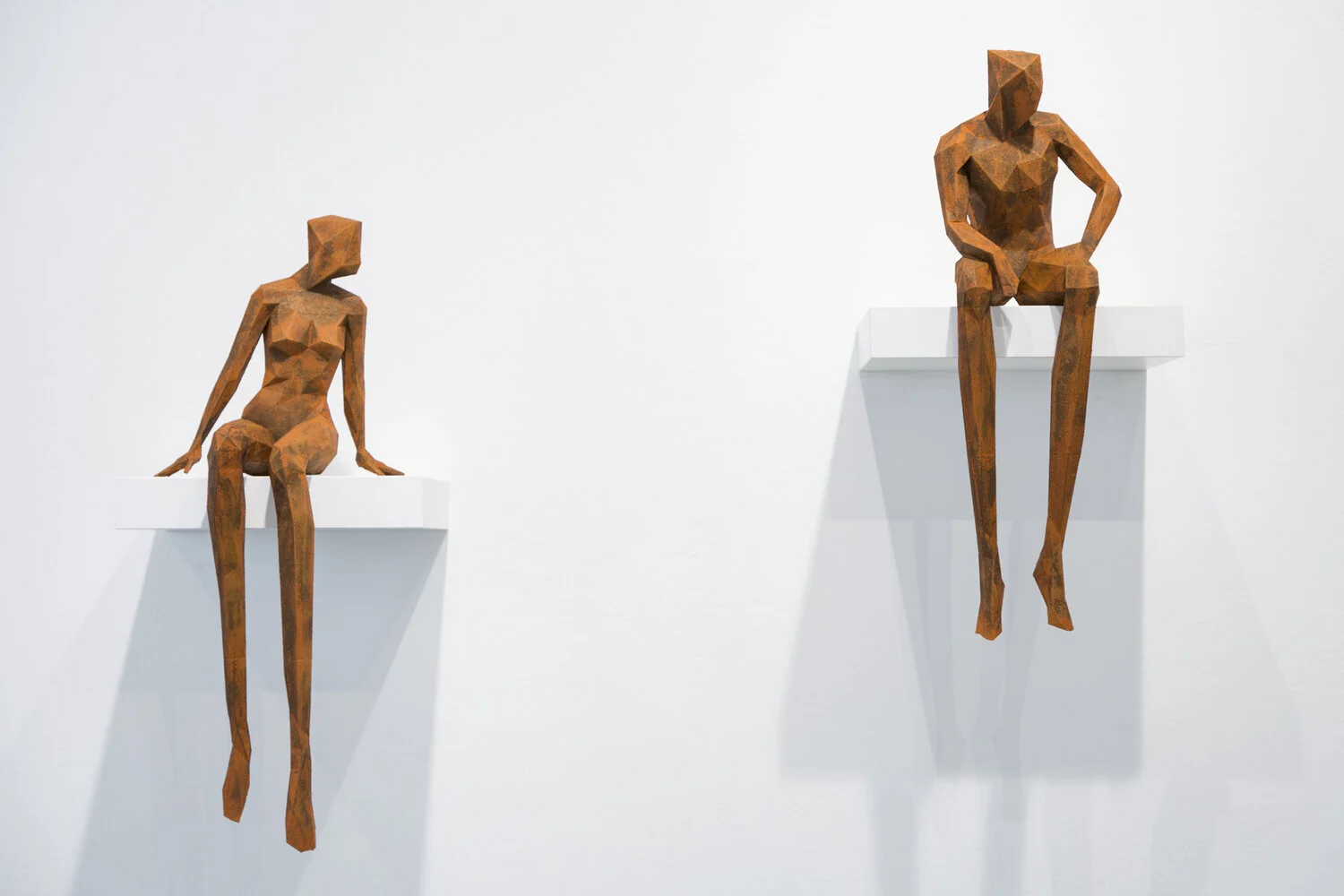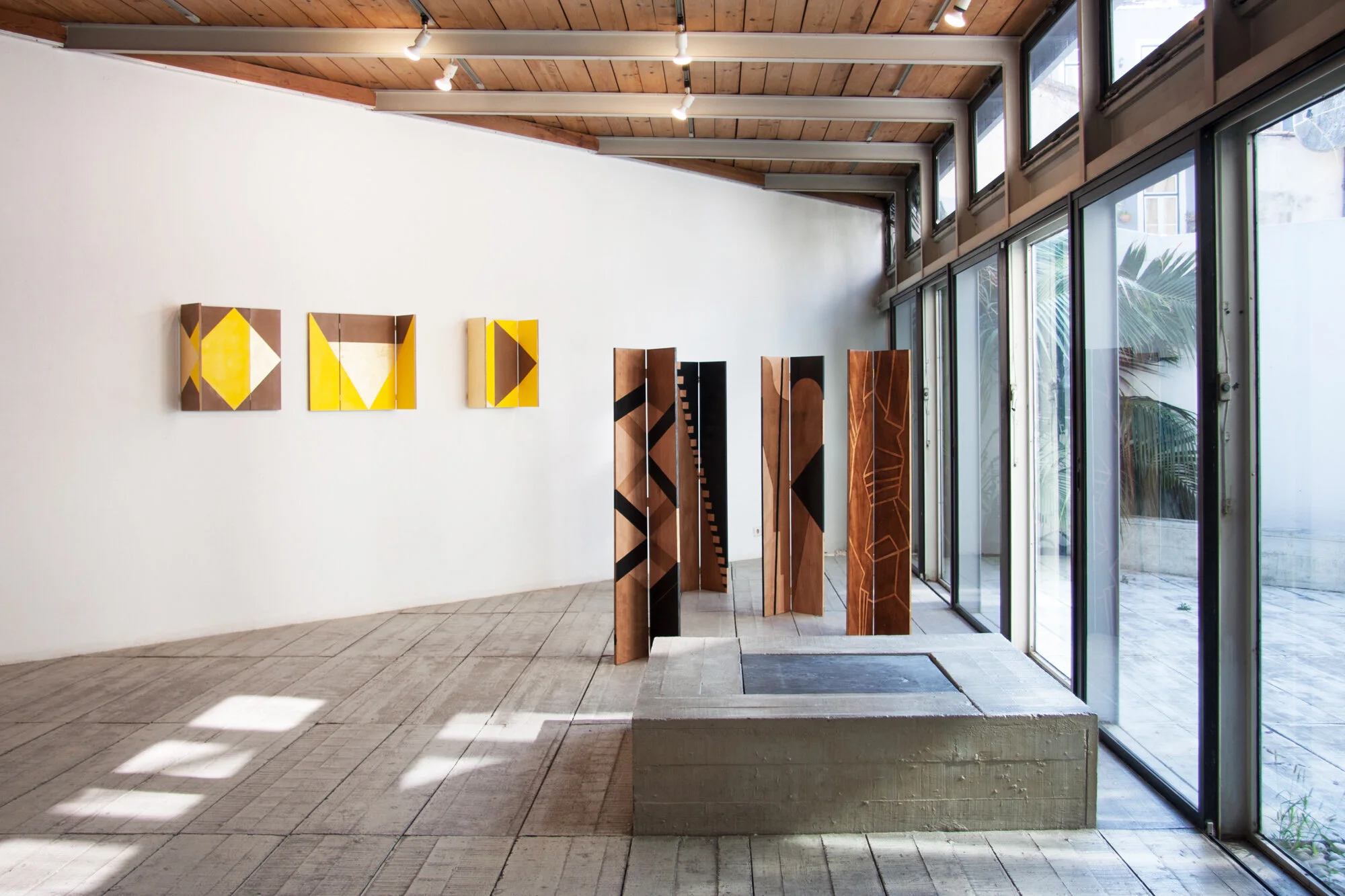Rebecca Weisman is a conceptually driven maker and thinker who makes deconstructed films of sculptures that are then re-embedded into the sculptures creating dreamy installations with layers upon layers of visual narrative and meaning. Her project Skin Ego centers on an immense, eight by twenty foot sculptural reconstruction of a section of a Finback whale, modeled after a photograph found on the internet of a real-life stranded whale.
INTERVIEW | Patrícia Pinheiro de Sousa
Patrícia Pinheiro de Sousa is a visual artist and filmmaker based in Rotterdam, the Netherlands. She works with multiple mediums and disciplines, such as video, text-based works, performance, sound, and self-published books. She is interested in fragmented landscapes and how incomplete narratives affect collective memory, while her latest projects reflect an interest in future landscapes.
INTERVIEW | Marina Wittemann
Marina Wittemann is a Russian artist, currently based in Germany. Her art is inspired by the ability to perceive the world through complex experiences of color, space, and time. This volumetric pictorial color field is an opportunity to perceive events, feelings, and emotions through synesthesia. She works with paintings as well as sculptures and is influence by various different cultures and techniques.
INTERVIEW with Natalie Lambert
Natalie Lambert (b. 1995) is an interdisciplinary artist as well as the Curator and Founder of Toula Gallery. Natalie approaches her work from feminist theory. Her work is exploratory to herself and the environment she is in or has experienced. Through language and eroticism, Lambert provokes thoughts of objectification and challenges the stereotypes about gender politics, sex, and the body.
INTERVIEW | Manuel Seita
Manuel Seita is a Portuguese artist, based in Vila Verde de Ficalho (Portugal). His body of work is multidisciplinary and includes drawing, painting, sculpture, ceramics, video art and installation. He often works on an idea, with a certain material and during the process he is taken to other fields. His works are a reflection on the nature of the materials and how they can be worked.
INTERVIEW | Carolina Serrano
Carolina Serrano is a Portuguese artist whose artistic practice develops in the field of sculpture. Serrano’s theoretical research revolves around the sphere of the temporality of Sculpture. The artist is particularly interested in working on the disturbing and mysterious cleavage between what is real and what is illusory, between what is visible and what is invisible, between what is palpable and what is immaterial.
INTERVIEW | Marcello Silvestre
Marcello Silvestre’s artworks narrate the city through the emotions, the smells, the flavors and the noises. He relates the indissoluble relationship between man and city sculpting bodies, legs and arms on which he lets towers and houses arise in a continuous flow. He creates dreamlike visions and interweaving of soft lines, triangles and edges.
INTERVIEW | Ronit Keret
Ronit Keret’s recent work deals with the ecological crisis, the melting glaciers that have been changing due to the nature of human activity. The Installations that Keret creates are formed as a reaction to the given display space and the nature of the material she uses itself. Keret describes the transitions between good and evil in looking at human and nature relations and the gap between childhood dreams and catastrophic reality.
INTERVIEW | Cherrie Yu
Cherrie Yu is born in Xi'an, China. She currently lives and works from Chicago. Yu is the author of the Narrative Series is a series of videos in which classical narratives and characters were reenacted with thrift objects or foods. The narrative is chosen often signals a significant change to the characters selected, such as their marriage, death, exile, or injury.
INTERVIEW | Salomé Tamayo Hidalgo
Salomé Tamayo’s characters humorously celebrate the inconsistencies and peculiarities of social cannons. She plays with abstract and existential concepts to give concrete depictions of people being and living in their own way. By observing people, she looks for characters and stories entwined in everyday life. The collection is meant to bring people together through the real and the raw.
INTERVIEW | Rosinda Casais
Rosinda Casais combines architecture with sculpture. At the moment, she collaborates with Fahr 021.3 and studies sculpture at Faculdade de Belas Artes da Universidade do Porto. Throughout her career, she collaborated with different teams of architects, Atelier Peter Zumthor, Vinagre & Côrte-Real, Immopo and as a freelancer.
INTERVIEW | Mario Devcic
INTERVIEW | Cate Wind
Cate Wind creates sculptures and installations that reveal correlations between modern knowledge and ancient systems of belief. She assembles refined materials such as metal, glass, or resin with discarded found objects including gearwheels, vintage herbariums, or religious textiles. Fascinated by the interaction of materials with different feels and auras, her sculptures can be described as experiments that try to investigate the internal energies of various matters and how they affect each other.
INTERVIEW | Joana Alarcão
Joana Alarcão brings awareness to the corrosive social alienation toward the environment and even human beings. The contrasts of how nature is consecutively part of the human species and human reaction toward it led her sculptures and drawings to be mostly human referenced and made with naturally made materials. The friction behind these two arguments is a major aspect of her practice.
INTERVIEW | Jiwon Kwak
Jiwon Kwak was born in Seoul, South Korea, in 1991 and received his BA from Goldsmiths University, London 2018, and MA from Royal College of Art, London in 2020. He has been working as a breakdancer at Arun Company since 2004. Kwak's work is majorly influenced by Hip hop culture - the elements of Hip hop come from different regions and cultures.
INTERVIEW | Rui Aleixo
Rui Aleixo was born, lives, and works in Lisbon. He develops his artistic work as a freelancer since 2008, and he has exhibited both collective and individual projects. He works with diversified techniques, materials, and media, materialized in works of painting, drawing, engraving, installation, and sculpture, as well as performance or action. He is represented in private collections and a public collection at Fundação Portuguesa de Telecomunicações.
INTERVIEW | Aleks Rosenberg
Aleks Rosenberg is a multi-disciplinary artist and filmmaker who resides in the United States. The central themes found in his works relate to the 'outsider looking into the darkness of the human vortex' countered by the optimism of 'no matter what, the sun will always rise tomorrow'. For Rosenberg, there has always been the tension between light and darkness, and as such, his compositions seek to find a balance between the two extremes.
INTERVIEW | Alexandra Fly
Alexandra Holownia is a performance and interdisciplinary conceptual artist who made actions in public space, costumes, sculptures, drawings, video, text, lectures. Alexandra Holownia's works touch on taboo topics related to gender. She demonstrates against exclusion, discrimination based on age, sexism, and patriarchal structures in women and men's private and public relations. Calls for socio-political tolerance, acceptance of human rights, and freedom of sexual self-determination.
INTERVIEW | Marina Gasparini
Marina Gasparini was born in Gabicce Mare. She lives and works in Bologna, Italy. After graduation from the Academy of Fine Arts in Ravenna, she started her artistic activity in Bologna in the '80s. Her practice focuses on living places and is mostly based on drawing, embroynding, and installations. Since 2001, the employment of textiles has been constant in her works.
INTERVIEW | Carmel Ilan
Carmel Ilan is an obsessive collector of abandoned texts. This no man's land of abandoned books is an interesting position for her to start. Working with paper requires attention to the delicacy, crispness, and fragility of the material. Carmel’s images grow out of folded fields of paper. Reading is transformed into observation. The papers, carriages of text, preserve the material memory from which they came, and at the same time, grow into a new language.































